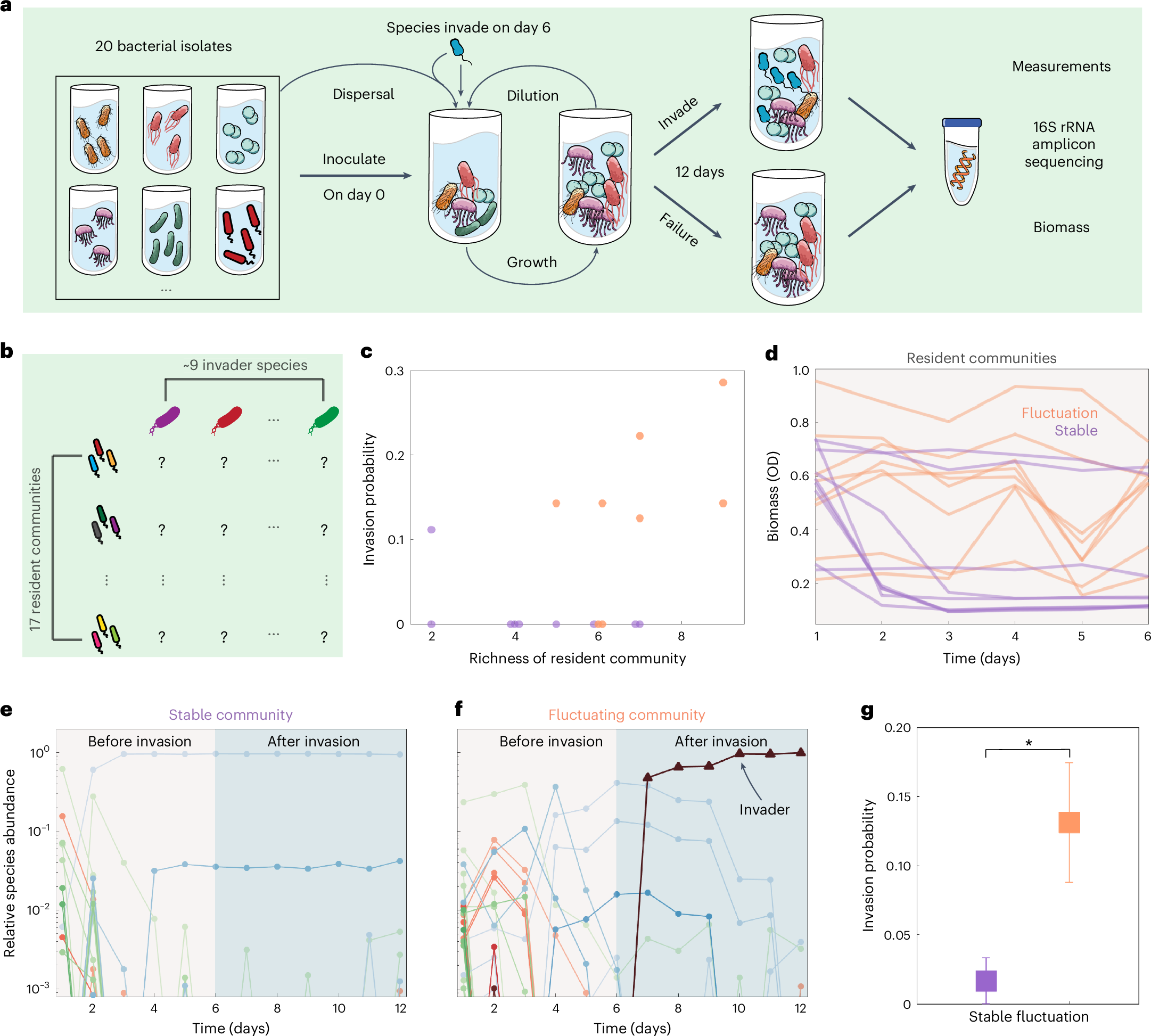2025-01-06 マサチューセッツ工科大学(MIT)
<関連情報>
- https://news.mit.edu/2025/new-way-determine-whether-species-will-successfully-invade-ecosystem-0106
- https://www.nature.com/articles/s41559-024-02618-y
- https://www.science.org/doi/10.1126/science.abm7841
微生物群集における集団的動態レジームが侵入の成功と影響を予測する Collective dynamical regimes predict invasion success and impacts in microbial communities
Jiliang Hu,Matthieu Barbier,Guy Bunin & Jeff Gore
Nature Ecology & Evolution Published:06 January 2025
DOI:https://doi.org/10.1038/s41559-024-02618-y

Abstract
The outcomes of ecological invasions may depend on either characteristics of the invading species or attributes of the resident community. Here we use a combination of experiments and theory to show that the interplay between dynamics, interaction strength and diversity determine the invasion outcome in microbial communities. We find that the communities with fluctuating species abundances are more invasible and diverse than stable communities, leading to a positive diversity–invasibility relationship among communities assembled in the same environment. As predicted by theory, increasing interspecies interaction strength and species pool size leads to a decrease of invasion probability in our experiment. Our results show a positive correspondence between invasibility and survival fraction of resident species across all conditions. Communities composed of strongly interacting species can exhibit an emergent priority effect in which invader species are less likely to colonize than species in the original pool. However, if an invasion is successful, its ecological effects on the resident community are greater when interspecies interactions are strong. Our findings provide a unified perspective on the diversity–invasibility debate by showing that invasibility and invasion effect are emergent properties of interacting species, which can be predicted by simple community-level features.
生態系の多様性とダイナミクスの創発段階をマイクロコズムでマッピング Emergent phases of ecological diversity and dynamics mapped in microcosms
Jiliang Hu, Daniel R. Amor, Matthieu Barbier, Guy Bunin, and Jeff Gore
Science Published:6 Oct 2022
DOI:https://doi.org/10.1126/science.abm7841
Predicting microbial community dynamics
Ecological communities are complex, and their dynamics are difficult to predict. Hu et al. used experimental bacteria communities to show that species richness and the strength of species interactions drive community dynamics (see the Perspective by Huelsmann and Ackermann), as predicted by theory. By manipulating species pool size and nutrient availability (which affects species interactions), the authors found that more complex communities were less stable over time. Furthermore, communities showed distinct phases, shifting from full species coexistence to partial coexistence to dynamic fluctuations as species pool size or interaction strength increased. Communities that fluctuated maintained higher species richness, suggesting that diversity and stability promote one another. —BEL
Abstract
From tropical forests to gut microbiomes, ecological communities host notably high numbers of coexisting species. Beyond high biodiversity, communities exhibit a range of complex dynamics that are difficult to explain under a unified framework. Using bacterial microcosms, we performed a direct test of theory predicting that simple community-level features dictate emergent behaviors of communities. As either the number of species or the strength of interactions increases, we show that microbial ecosystems transition between three distinct dynamical phases, from a stable equilibrium in which all species coexist to partial coexistence to emergence of persistent fluctuations in species abundances, in the order predicted by theory. Under fixed conditions, high biodiversity and fluctuations reinforce each other. Our results demonstrate predictable emergent patterns of diversity and dynamics in ecological communities.


